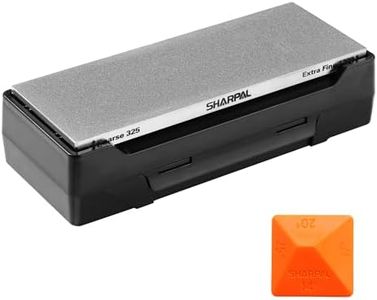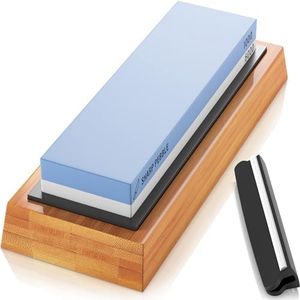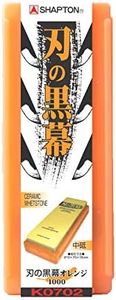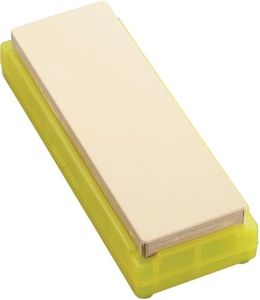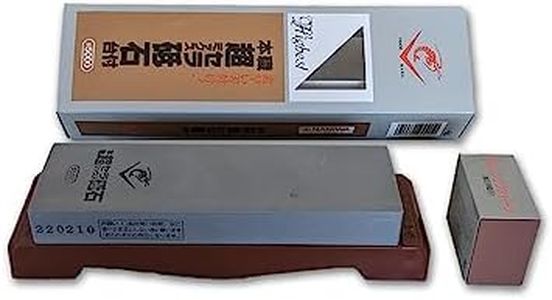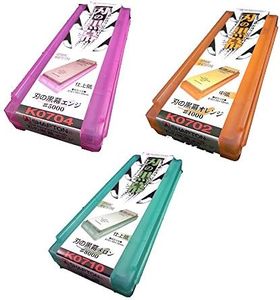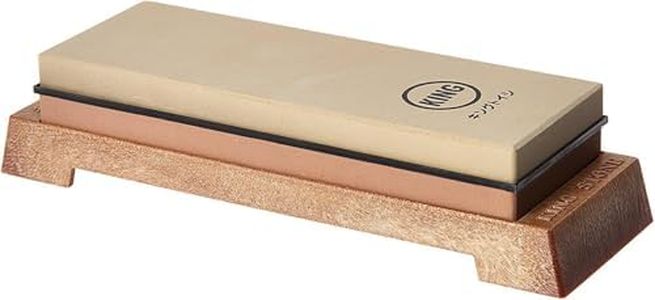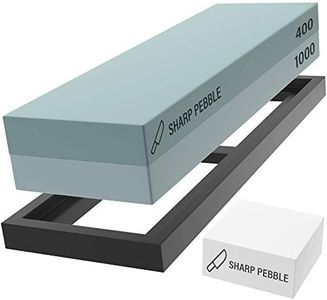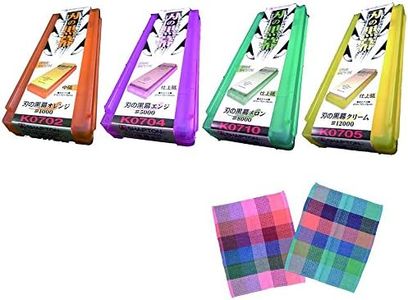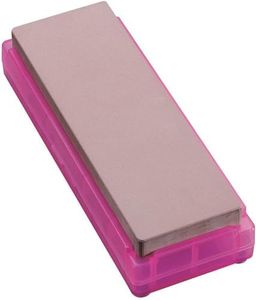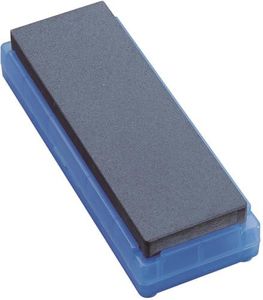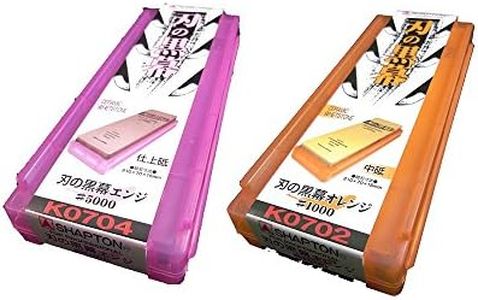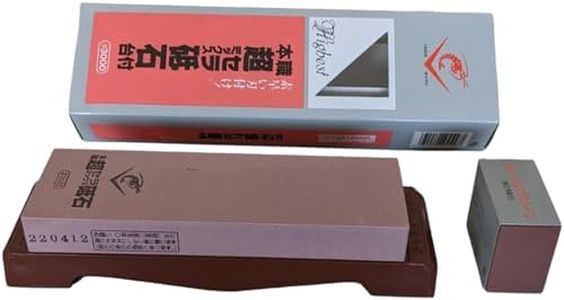We Use CookiesWe use cookies to enhance the security, performance,
functionality and for analytical and promotional activities. By continuing to browse this site you
are agreeing to our privacy policy
10 Best Sharpening Stones
From leading brands and best sellers available on the web.Buying Guide for the Best Sharpening Stones
Choosing the right sharpening stone is essential for keeping your knives, tools, or blades in top condition. A good sharpening stone helps maintain a sharp edge while also protecting the life of your blade. The key is to consider what tools you will be sharpening, how often you'll use the stone, and how much time you want to spend on maintenance. Understanding the different types and features of sharpening stones will help you pick the best one for your needs.Grit LevelGrit level refers to how coarse or fine the sharpening surface is. Lower grit numbers (around 200–600) are coarse and remove material quickly, making them ideal for repairing very dull or damaged blades. Medium grit stones (ranging about 800–2000) are good for general sharpening and regular maintenance. Higher grit stones (3000 and above) produce a fine, polished edge and are perfect for finishing and honing. Think about what your blades need most: for basic sharpening, a medium grit is often enough; for heavily used or damaged edges, start with coarse grit; and for a razor-sharp finish, you’ll want a high grit stone.
Stone MaterialSharpening stones are made from different materials like natural stone, synthetic (man-made) stones, diamond plates, or ceramic. Each has a different feel, durability, and speed of sharpening. Synthetic stones are versatile and easy to find, making them good for everyday use. Diamond stones are very hard and sharpen quickly, perfect for people who want fast results and need to sharpen very hard steels. Natural stones can deliver an extremely smooth finish but may take more practice to use. Choose a material based on how often you’ll sharpen, your experience, and what blades you own.
SizeThe size of the sharpening stone affects how comfortable and effective sharpening will be. Larger stones provide more surface area, making it easier and more efficient to sharpen long blades or work consistently. Smaller stones are more portable and convenient for carrying around or spot-sharpening smaller tools. Consider what you’ll be sharpening most often – if it’s kitchen knives or long tools, go for a bigger stone; for pocket knives or portability, a smaller stone might be enough.
Water, Oil, or Dry UseSome sharpening stones need to be used with water or oil to work properly and to carry away metal particles. Other stones, like some diamond or ceramic stones, can be used dry. Water stones are easy to clean and quick to prepare. Oil stones can take longer to clean but may last longer between uses. Think about how much preparation and clean-up you’re willing to do and read the instructions for the stone you’re considering. If you want something simple with minimal cleanup, a dry-use stone may suit you best.
Maintenance NeedsSharpening stones occasionally need to be ‘flattened’ or resurfaced because they can wear unevenly over time. Some materials, like water stones, tend to wear down more quickly and require more frequent flattening. Diamond and ceramic stones are more resistant to wear. If you want a lower-maintenance option, diamond or ceramic is a good pick, while highly effective stones like soft water stones may require extra care, but they provide great results if you’re willing to maintain them.
